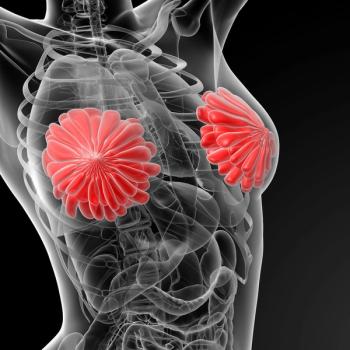
Oncology NEWS International
- Oncology NEWS International Vol 8 No 9
- Volume 8
- Issue 9
Human Trials to Begin for Genetically Engineered Salmonella
NEW YORK-The first clinical trials of a live genetically engineered Salmonella typhimurium bacterium are expected to get underway in the second half of this year in patients with cutaneous metastases of melanoma and breast cancer.
NEW YORKThe first clinical trials of a live genetically engineered Salmonella typhimurium bacterium are expected to get underway in the second half of this year in patients with cutaneous metastases of melanoma and breast cancer.
Terrence W. Doyle, PhD, vice president for research and development, Vion Pharmaceuticals, Inc., New Haven, Connecticut, revealed plans for the phase I study at Current Concepts in Cancer Therapy II, a scientific symposium sponsored by Long Ridge Associates. Developed in his companys proprietary program, Tumor Amplified Protein Expression Therapy (TAPET), the bacterium, VNP20009, will be injected directly into the skin lesions in the initial trial.
The aim of the study will be to determine the agents safety and appropriate dose range in humans. Were looking for the minimum effective inoculum, Dr. Doyle said. Unlike many antitumor agents, because this is a multiplying vector, we dont have any need to try to reach a maximum tolerated dose, and it is far better to just simply find the dose where we can get uniform colonization.
Animal studies have shown that the bacteria preferentially target tumors over normal tissue by more than 1000:1, Dr. Doyle said. An important difference from other therapeutic modalities, he added, is that the motile organism penetrates all compartments of the tumor, including the hypoxic and necrotic layers.
In contrast to wild type salmonella, VNP20009 produced no septic shock in swine and no changes in the body temperature of cynomologus monkeys. Tests of antibiotic sensitivity showed that if anything, it was more sensitive than the wild strain, Dr. Doyle commented.
Ultimately, Vion researchers expect TAPET to deliver recombinant genes or other toxic payloads to solid tumor, but, in research, VNP20009 alone achieved 95% suppression of B16 melanoma in mice, a level slightly better than that seen with optimal doses of fluorouracil and cyclophosphamide.
Human Colon Cancer Model
In a model of human colon carcinoma DLD-1 in mice, VNP20009 was injected on day 17 after tumor implantation, when the median tumor volume was 300 mm². With the agent, were able to stop the tumor growth cold, Dr. Doyle said, whereas the control animals progressed rather quickly to death.
In research leading up to clinical trials, B16 melanoma was implanted into both flanks of mice. Five days later, B16 tumor cells were injected into the tail vein causing implantation in the lungs. Without treatment, the mice die at day 21 or 22 from growth of the flank tumors. Injection of VNP20009 into one of these tumors induces excellent inhibition of that tumor, Dr. Doyle said, and a little less good inhibition of the contralateral tumor as well as inhibition of the lung mets. When VNP20009 was injected into the tail vein, both the laterally implanted tumors and the lung mets were equally suppressed (see figure).
Based on these findings, the company hopes to move to a phase I study of IV administration.
Articles in this issue
over 26 years ago
‘Gonzalez Diet’ to Be Tested in Pancreatic Cancerover 26 years ago
Talking to Members of Congress About Cancer Issuesover 26 years ago
Modified SPECT Scintimammography Proves More Accurateover 26 years ago
Lilly Enjoined From Promoting Evista for Breast Cancer Preventionover 26 years ago
Experts Brief Capitol Hill on Trial Costs Surveyover 26 years ago
NIH Plan Quadruples Prostate Cancer Research Fundsover 26 years ago
Gabapentin as Adjuvant to Opioids in Neuropathic Painover 26 years ago
Biochemotherapy May Be an Option in Metastatic Melanomaover 26 years ago
PET Scans Spare Some NSCLC Patients From Mediastinoscopyover 26 years ago
Computer Technique Gives New Life to Thermal Breast ImagingNewsletter
Stay up to date on recent advances in the multidisciplinary approach to cancer.


















































































